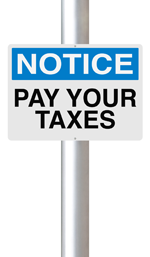Last updated: Oct. 26, 2016
What Is the Voluntary Disclosure Program?
The Voluntary Disclosure Program (VDP) is offered by the Canada Revenue Agency (CRA) and gives taxpayers a second chance to come clean with respect to omissions or errors from a previous tax return or one you didn’t file.
While you will still need to pay the taxes (and potentially interest), the biggest benefit is that, because it’s voluntary, you will avoid penalties or, in the worst case, prosecution.
Not filing your taxes raises a red flag at the CRA. Moreover, if there is a balance owing with your taxes, the amount will get larger thanks to interest charges—and even bigger if there are penalties.
That’s where the VDP comes in. The CRA will accept a voluntary disclosure and provide relief for a wide range of taxpayer omissions or errors.
Who Is Eligible?
The Voluntary Disclosure Program is available to any Canadian taxpayer. A taxpayer is defined as: an individual, employer, corporation partnership, trust, a goods and services tax/harmonized sales tax (GST/HST) registrant/claimant, or a registered exporter of softwood lumber products.
As a Canadian taxpayer, you are eligible for relief of penalties if you didn’t fulfil your tax obligations, report taxable income, claim the right expense on your tax return, report an amount of GST/HST, file information returns, or report foreign sourced income that is taxable in Canada.
You are not eligible for the relief of penalties for anything that has to do with bankruptcy returns, income tax returns with no taxes owing, elections, advance pricing arrangements, rollover provisions, or post-assessment requests for penalty and interest relief.
Even if you are an eligible Canadian taxpayer and have failed to either file taxes or intentionally omitted information, there are 4 conditions that must be met to use the program.
- The disclosure must be voluntary. If the CRA has asked for information or requests a filing before you apply for the VDP, you no longer have voluntary status and cannot use the program.
- Your disclosure must be complete.
- A penalty must be involved. That includes taxes owing or a penalty.
- The information or return must be more than a year old. The VDP does not apply to current filings.
If you do not meet all 4 requirements, you can’t file under the VDP. If you meet all requirements, you may want to consider taking advantage of the benefits provided under the VDP.
What Are the Benefits of the Voluntary Disclosure Program?
The biggest benefit of the VDP is that you may avoid any penalties or prosecution. You are still required to pay any back taxes and potential interest.
Another benefit of using the VDP is the reinstatement of benefits, including the Canada Child Benefit (CBB), GST/HST credit, and RRSP carry-forwards.
Once you voluntarily disclose your previous tax information using the VDP, the CRA usually reinstates these tax credit programs and RRSP benefits.
Once you qualify for and use the VDP, the CRA expects you to keep up to date with your taxes going forward. The CRA may consider reviewing your file a second time if the situation is beyond your control, but typically, each Canadian only qualifies to use the VDP once.
FBC, Helping Farmers & Small Business with Unique Tax Needs
If you’re behind in filing your taxes because you think you will have a large balance owning, forgot to include all of your income, made errors, or neglected to fulfil other tax obligations, the tax experts at FBC can help you make a voluntary disclosure to the CRA.
It can be daunting having to deal with the CRA on your own. When it comes to tax consulting and financial planning, FBC has been helping Canadian farmers and small business owners from coast-to-coast get their taxes done right for over 60 years.
If you’re behind in your taxes and owe money to the CRA and are considering using the VDP, contact FBC at 1-800-265-1002 or submit an online form and an FBC tax specialist will contact you at your earliest convenience.
